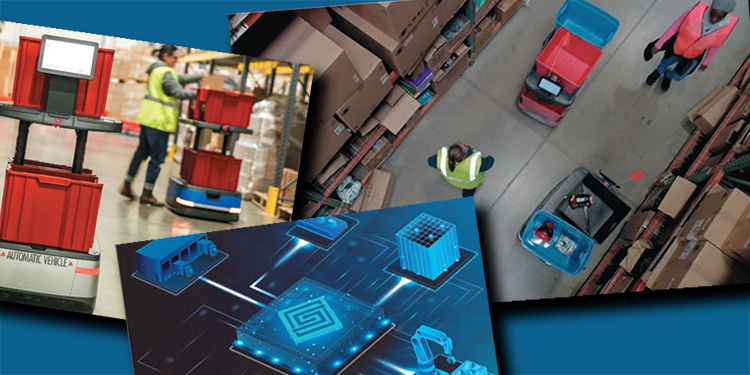
Warehouses and distribution centers (DCs) utilizing social distancing (and other) policies to safeguard the health and well-being of their employees during the COVID-19 pandemic are likely to continue to do so even after widespread vaccinations tamp down on coronavirus. That’s because spacing employees out reduces both viral loads and exposure time — and will likely reduce absenteeism as a result. Further helping to minimize close contact are robotic solutions, including collaborative mobile robots (cobots) and autonomous mobile robots (AMRs), as explored in a recent MHI Solutions article, “Social Distancing Decisions Impacting Robotics Choices.”
These solutions can be deployed to automate tasks such as the travel associated with picking or moving carts or loads of product around a facility. Instead, the mobile robots move from one associate to another while each associate remains stationed in a specific area, keeping them separated to minimize contact and potential exposure. Further, goods-to-person automated solutions typically incorporate stations at which each worker is presented items, either by an AMR or by the automated system itself. The workstations are usually spaced out with more than six feet between each, ensuring that workers stay in their own area and remain apart.
Training on these systems is generally fairly easy. Cobots and AMRs feature intuitive programming, making them easy to learn — usually in around an hour. Further, these robots can guide workers throughout a facility as they navigate on a dynamic path that changes to avoid obstacles or areas where other associates are present. They also typically include interactive tablet-style screens that display clear, easy-to follow, visual instructions. This helps a worker to complete a task properly or select the correct item without needing to consult another associate or supervisor for assistance.
Beyond the social distancing benefits, these robots improve worker health and safety by minimizing the amount of time employees spend walking up and down conventional warehouse aisles to fill orders in a manual operation. This reduces fatigue and allows workers to pick faster and more accurately; in turn, productivity typically increases by two to three times in distribution centers utilizing cobots and AMRs. Finally, for operations considering adding these systems to their manual operations, many of them can be deployed remotely by the manufacturer or supplier, eliminating the need for an outsider to enter a facility — a concern for many operations seeking to protect their employees from potential exposure to COVID-19.
For more information about how robotics supports pandemic-related health and safety initiatives, read the full article here.



